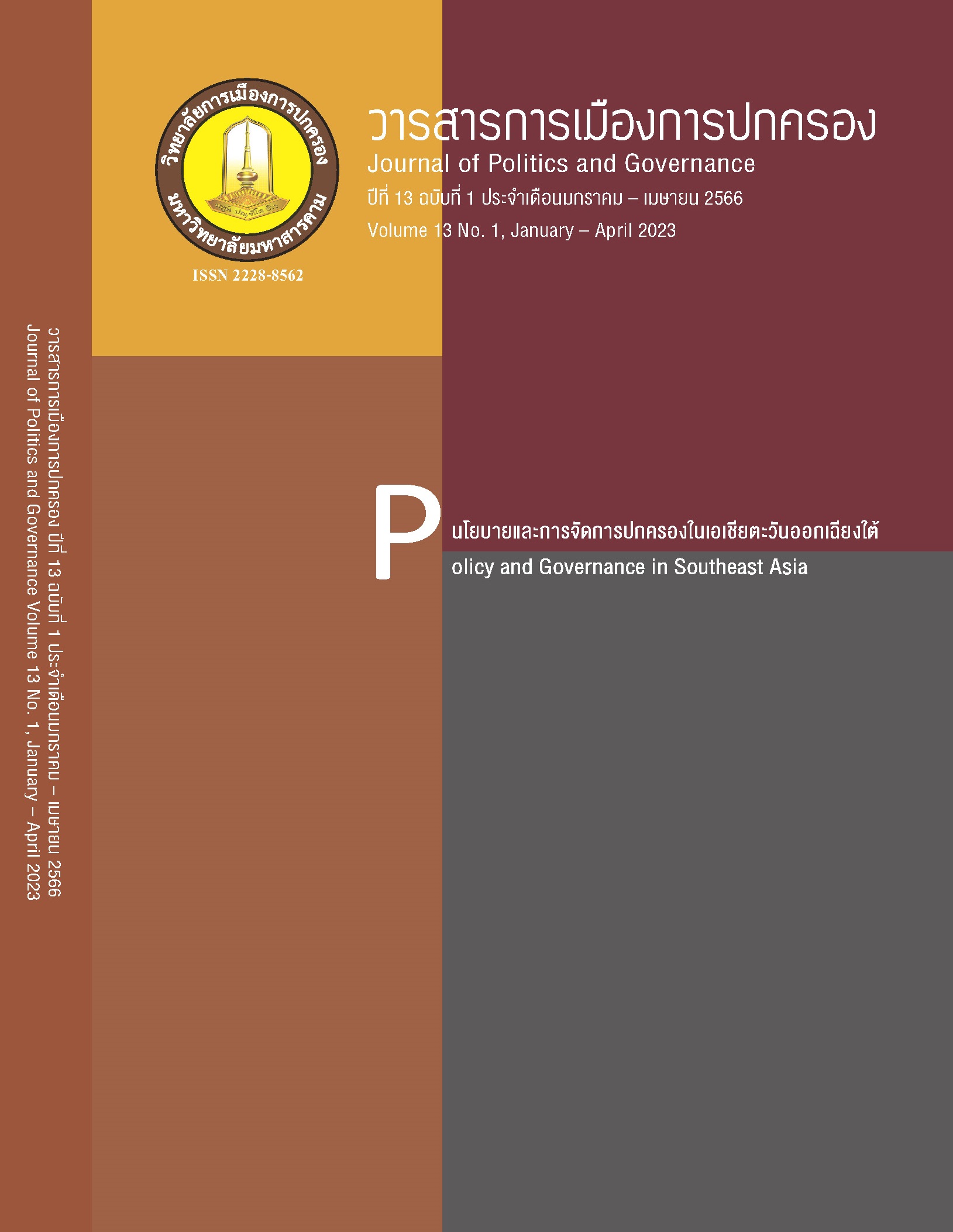Radicalization and Recruitment Process of the Insurgent Group: A Case Study of BRN
Main Article Content
Abstract
This research aims to study radicalization and recruitment process of Barisan Revolusi Nasional Melayu Patani or BRN. It is qualitative research adopting documentary research, focus group, and in-depth interview. The results of this research show that 1) the BRN adjusts strategy from the seven-step plan toward more political movements and struggles, both domestically and internationally, especially peace dialogues in the international arena 2) in the recruitment phase, the BRN members act as spotters to induce youths with positive characteristics such as students with high GPA, neat and nice behavior, and leadership 3) in the radicalization phase, concepts and ideologies especially history, historical issues, and ethno-nationalism are emphasized and reproduced along with military practices 4) in planning and operation phase, youths who pass military practice must launch the operations in order to prevent them from escaping or abandoning the organization. The last part of this article provides policy recommendations for the government.
Article Details

This work is licensed under a Creative Commons Attribution-NonCommercial-NoDerivatives 4.0 International License.
References
สุรชาติ บำรุงสุข. (2551). การก่อความไม่สงบในภาคใต้ของไทย. กรุงเทพฯ: โครงการความมั่นคงศึกษา.
Achsin, M. Z. (2019). “Culture and Role of Woman in Terrorism in Indonesia. Case Studies: Suicide Bombings in Surabaya and Sibolga”. International Journal of Engineering and Advanced Technology (JIEAT), 8(5C), 873–876.
Borum, R. (2003). “Understanding the Terrorist Mindset," FBI Law Enforcement Bulletin, 72(7). https://scholarcommons.usf.edu/cgi/viewcontent. cgi?article=1227&context=mhlp_facpub.
Braddock, K.V. (2020). Weaponized Words: The Strategic Role of Persuasion in Violent Radicalization and Counter-Radicalization. Cambridge: Cambridge University Press.
Droogan, J., Waldek, L. & Blackhall, R. (2018). Innovation and Terror: An Analysis of the Use of Social Media by Terror-related Groups in the Asia Pacific. Journal of Policing, Intelligence and Counter Terrorism, 13(2), 170-184.
Gottlieb, S. (ed.). (2014). Debating Terrorism and Counterterrorism: Conflicting Perspectives on Causes, Contexts, and Responses (2nd Ed.). Los Angeles: CQ Press.
Gray, C. S. (2007). War, Peace and International Relations: An Introduction to Strategic History. New York: Routledge.
Kraft, M. B. & Marks, E. (2018). U.S. Counterterrorism: From Nixon to Trump: Key Challenges, Issues, and Responses. Florida: CRC Press.
Martin, G. (2018). Understanding Terrorism: Challenges, Perspectives, and Issues. Los Angeles, CA: SAGE.
Martin, C. A. and Prager, F. (2019). Terrorism: An International Perspective. Los Angeles: Sage.
Moghaddam, F. M. American Psychologist. The Staircase to Terrorism: A Psychological Exploration, 60(2), 2 (February–March 2005), https://doi.org/10.1037/0003-066X.60.2.161.
Moskalenko, S. & McCauley, C. (2020). Radicalization to Terrorism: What Everyone Needs to Know. New York: Oxford University Press.
Neumann, P. R. (2013). The Trouble with Radicalization. International Affairs, 89(4), 873-893.
Nuraniyah, N. (2018). Not Just Brainwashed: Understanding the Radicalization of Indonesian Female Supporters of the Islamic State. Terrorism and Political Violence, 3(6), 890–910.
Nuraniyah, N. (2019). The Evolution of Online Violent Extremism in Indonesia and the Philippines. London: The Royal United Services Institute for Defence and Security Studies.
Rahmah, U. (2020). Women in Jihad. Counter Terrorist Trends and Analyses, 12(4), 21–26.
Sultan, Oz. (2017). Combatting the Rise of ISIS 2.0 and Terrorism 3.0. The Cyber Defense Review, 2(3), 41-50.


